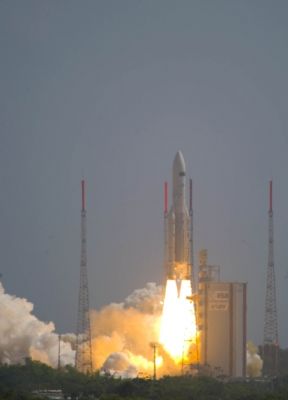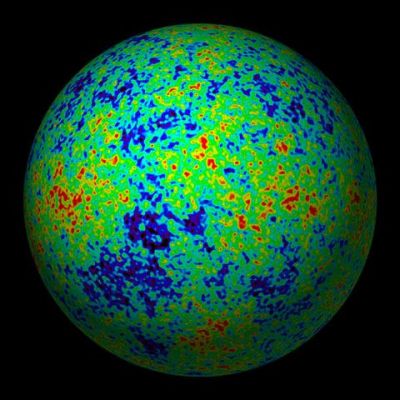
You might be wondering why nobody at FQXi was following last week's successful launch of the Ariane 5 rocket carrying two new observatories: The Planck mission, which will scan the cosmic microwave background in unprecedented detail; and infrared telescope Herschel that will look for the faint emissions from objects at the edge of the solar system and from distant galaxies. Certainly the missions promise to uncover data that will help answer the sort of foundational questions that are this site's bread and butter.
The reason, as some may have picked up, was that last Friday FQXi had a (re)launch of its very own, debuting a redesigned website. Many thanks to Christopher Gronbeck and Tien-Yi Lee for the new look. I should add that we didn't deliberately set our launch date to match the European Space Agency's in a subversive effort to steal their thunder; it was a coincidence on our part. (Whether ESA deliberately delayed their launch to coincide with ours, however, I cannot say...)
All this is leading up to me saying that, of course, FQXi researchers are thrilled about the prospects of Planck and Herschel. Well, I _say_ that, but a controversial physics birdie whispered in my ear last week that s/he thinks that Planck doesn't actually have much to offer, and that all the good CMB data was already mined by WMAP. This physics birdie knows his/her stuff, and isn't affiliated to either to either Planck (well, obviously) or WMAP. So is Planck worth the fuss? I'll leave that to others who know more about CMB observations to argue over.
In Planck's defense, I should point to a nice article that ran in Nature a few weeks ago that talked about what Planck might tell us about whether inflation happened or not, with comments from FQXi's Andrei Linde. It follows earlier hints found in WMAP's 3-year data that things might not all be smooth sailing for inflation. The excitement around those initial hints has since been dampened, but hasn't died out completely, and the Nature piece re-analyses the story in light of forthcoming Planck data that might help pick inflation apart from the much more controversial cyclic universe model.

Anyway, back to the more optimistic line, FQXi grant-winner Alex Maloney, for example, hopes that the Planck observations will vindicate his attempts to find to a wavefunction of the universe, by treating the universe as a hologram. You can read more about his work in Anil Ananthaswamy's article "The Holographic Universe."
Maloney's work hinges on the holographic principle, a trick physicists use to handle tough problems by recasting them as equivalent problems in a lower number of dimensions. He isn't the only one trying to exploit this principle. Others include FQXi grant-winners Subir Sachdev (who wants to use the principle to work out whether string theory could have relevance to the real world, in particular to materials science) and Alex Vilenkin (who is using it to and take a census of all the universes in the multiverse).
So anyway, good luck to Planck, Herschel, and FQXi's holographic physicists.